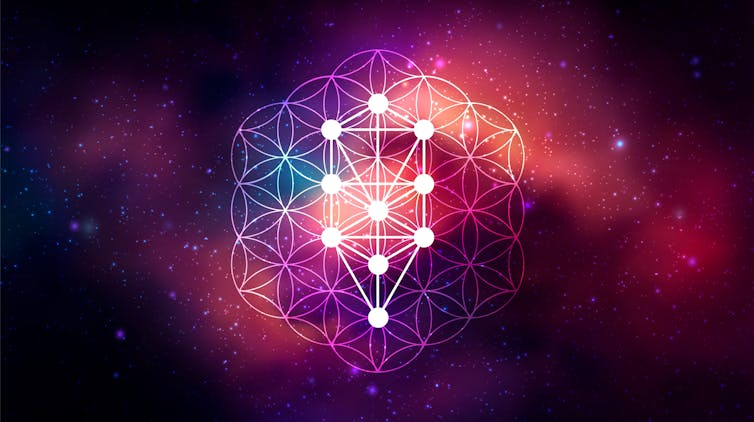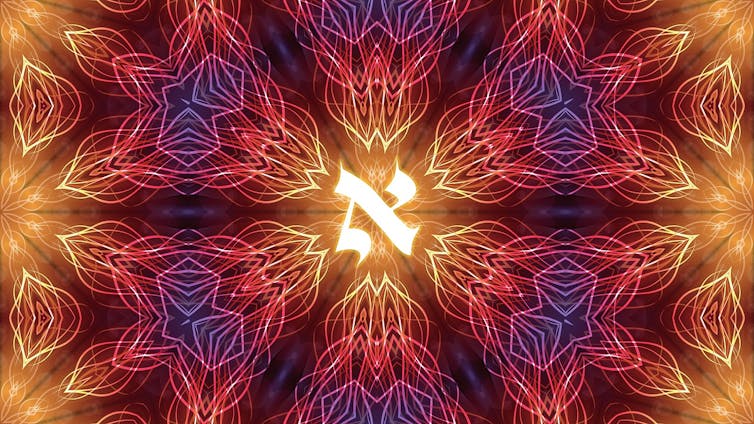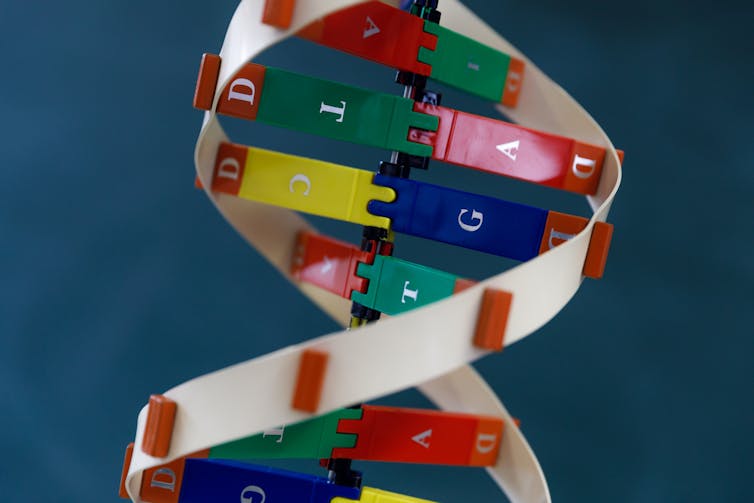
Isaac Asimov’s iconic science fiction collection “I, Robot” tells the story of androids created at U.S. Robots and Mechanical Men, Inc. The androids range from “Robbie,” who is nonvocal, to “Stephen Byerley,” who may or may not be a robot – he is so humanlike that people can’t tell.
Yet each model is made of the same elementary components: the binary code of ones and zeros. The differences in behavior between the simplest robot and the most advanced one, nigh indistinguishable from a human being, is simply the sequence of these two digits.
All computer languages are ultimately rendered in ones and zeros, even artificial intelligence programs – today’s equivalent of “Stephen Byerley.” But though this technology is relatively new, the concept it’s hinged on is not.
The idea that rearranging elemental units just so can produce powerful, even seemingly magical results appears all around us. It manifests in everything from technology and science to religion and art – a pattern I focus on in my work about how literature intersects with science, technology, engineering and math.
Some of the examples of this pattern that I find most fascinating are also the most ancient: They come from Kabbalah, a form of Jewish mysticism that first appeared in print in the 12th century C.E.
Building blocks of creation
Integral to Kabbalah is the notion that Hebrew letters are the building blocks of the cosmos. According to mystical interpretations of the creation story in the Book of Genesis, God brought the world into being by creating the alphabet, then assembled the earth and sky by recombining letters.
“God is portrayed as an architect and the Torah a blueprint in the creation of the world,” Jewish studies scholar Howard Schwartz writes in his book “Tree of Souls.” “The way the letters of the alphabet emerge and combine has an uncanny resemblance to the combining and recombining of strings of DNA.”

The “Sefer Yetzirah,” or “Book of Creation,” which Torah scholar Aryeh Kaplan called “the oldest and most mysterious of all Kabbalistic texts,” describes the Hebrew letters as having great power. In Rabbi Kaplan’s translation of and commentary on verse 2.2, God “engraved” the letters “out of nothingness,” then “permuted” them into different combinations and “weighed” them.
“Each letter represents a different type of information,” Kaplan wrote. “Through the various manipulations of the letters, God created all things.”
From mud to man
In Jewish storytelling, Hebrew letters’ sacred power can be manipulated into combinations that animate inanimate matter. Such is the case of one of the earliest humanoid robots or “androids” in literature: the golem, a manlike creature made of clay.

While there are numerous versions of this Jewish legend, the notion that letters animate the golem is common to them all. The mass of molded earth becomes lifelike when its maker intones secret combinations of letters. Engraved on the golem’s forehead is the Hebrew word for truth, “אמת,” comprised of the first, middle and last letters of the Hebrew alphabet – which Jewish tradition interprets to mean that truth is all-encompassing.
The golem sometimes helps the Jewish community, or sometimes wreaks havoc, depending on the story. But the golem also represents something bigger: With mystical knowledge, man imitates God’s act of creation.
To deanimate the creature, its maker must remove the first letter written on its forehead: א, or aleph, which represents the oneness of God. That leaves מת, the Hebrew word for “dead” – reflecting the Jewish tradition that there is no truth without God.

‘Coding’ everywhere you look
Like the golem, robots, androids and even AI are powered with recombinations of elemental units. Instead of Hebrew letters, the units are ones and zeros. In both instances, the specific permutation makes all the difference – and all these creations have inspired speculative stories about what happens when familiar building blocks are rearranged.
The creature in Mary Shelley’s “Frankenstein” arises as an assortment of body parts. Novelist Margaret Atwood’s “Crakers” are humans 2.0, bioengineered from reshuffled genes. In science fiction writer Ted Chiang’s novella “Seventy-Two Letters,” which draws from golem legends, dolls move according to the sequence of letters on a parchment placed in their backs.
Such patterns are not just the stuff of fiction, nor are they limited to computer science. Permutative “coding” is all around. Music notes are arranged to form a melody; gene sequences are combined to form an organism. In all living things – owls, geckos, people, roses – the instructions encased in DNA comprise recombinations of the same four nucleobase pairs.
The biological difference between a complex human and a simple bacterium is the order in which the nucleobase pairs are arranged. Hugo de Vries, a biologist working at the turn of the 20th century, observed that “the whole organic world is the result of innumerable different combinations and permutations of relatively few factors.”

Power of sequence
Not all combinations “work” – neither in science nor in storytelling. In “On the Nature of Things,” a famous poem about philosophy and physics, the first-century Roman writer Titus Lucretius Carus cautions that “we must not think that all particles can be linked together in all ways, for you would see monsters created everywhere, forms coming to being half man, half beast …”
Fantastical imaginings aside, the core idea stands: Not all permutations yield viable results. To put it in terms of modern biology, genes with certain combinations of the four nucleobase pairs would not lead to a functioning organism.
Writer Jorge Luis Borges explored similar ideas in “The Library of Babel,” a short story about a library-like universe filled with books that contain every possible permutation of 25 characters. Most amount to nonsense – strings of letters that bear no meaning.
What sets apart something that works from something that doesn’t is sequence. The difference between the behavior of a simple robot like Asimov’s “Robbie” and the behavior of AI so complex that it seems sentient boils down to the sequence of ones and zeros that instruct it – not altogether dissimilar from the way a single letter is the difference between animation and deanimation, or creation and destruction, in Jewish folklore.
The potential consequences of AI’s novel permutation have caused fear and uncertainty. Yet perhaps there is some comfort in the notion that, as the Bible says, אֵין כָּל חָדָשׁ תַּחַת הַשָּׁמֶשׁ: There’s nothing new under the sun.
Rocio Benabentos, Mark Finlayson and Mendel Hendel contributed feedback for this article.![]()
Rhona Trauvitch, Associate Teaching Professor of English, Florida International University
This article is republished from The Conversation under a Creative Commons license.
No comments:
Post a Comment